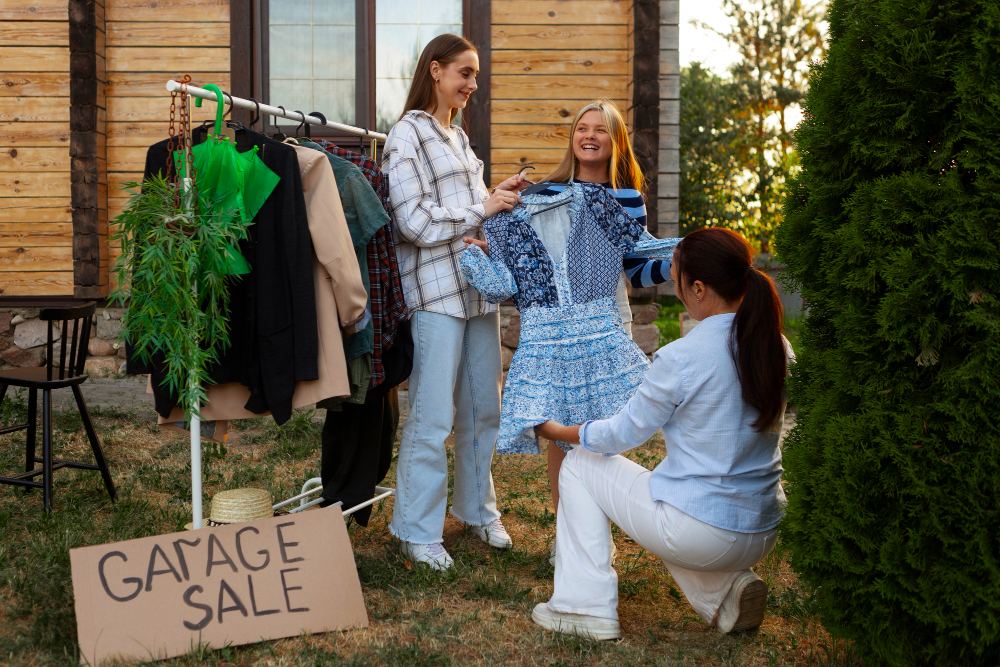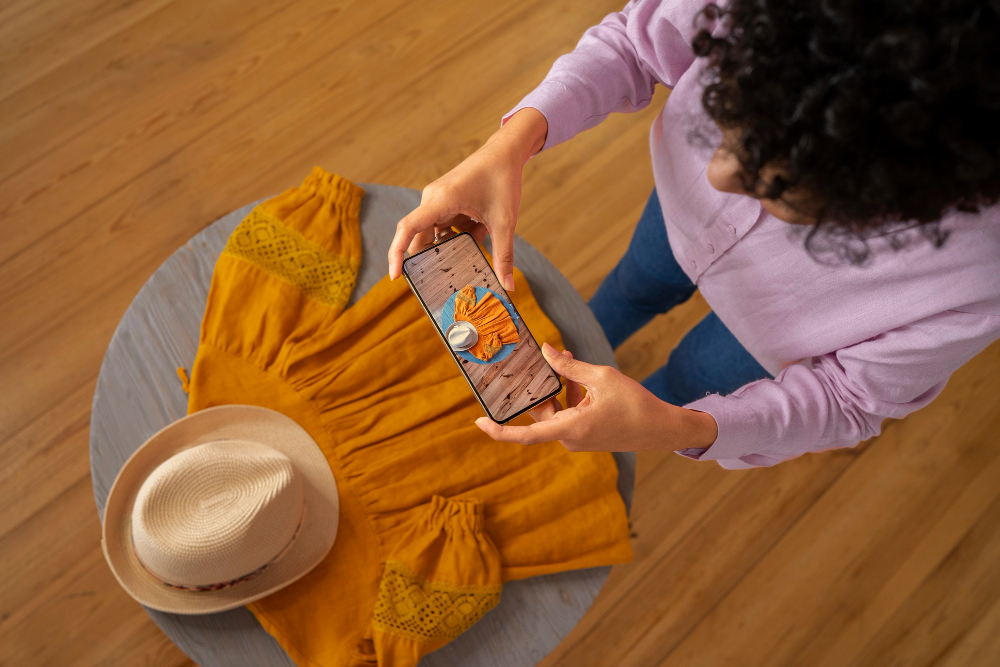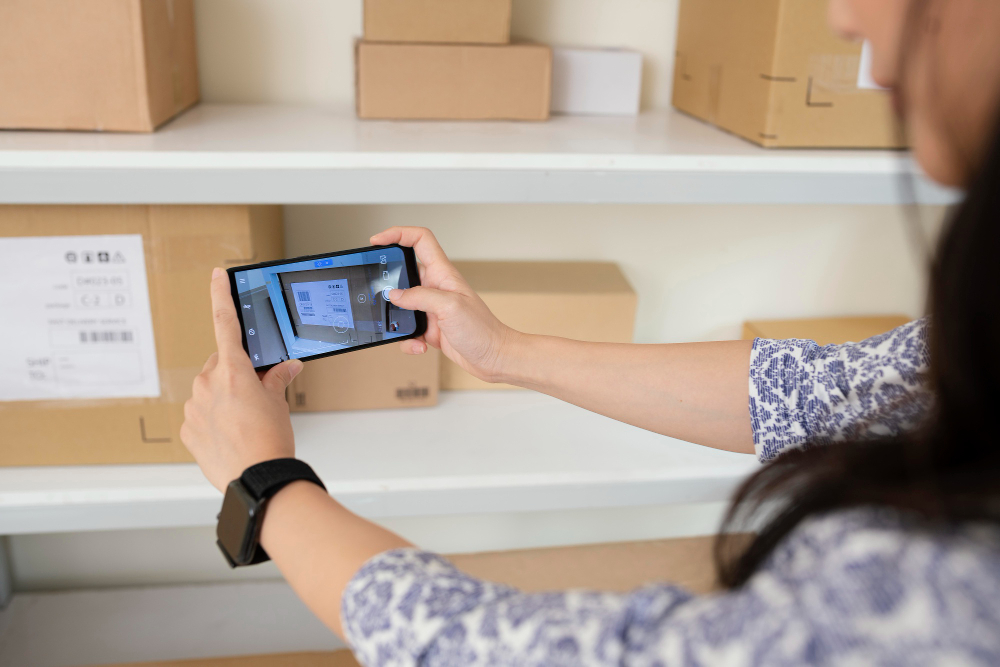Have you tried the new “true-cost” math flying around TikTok? The idea is simple: take what you paid for an item, divide it by the number of times you actually wore or used it, and that’s the real price per wear. My most painful reveal was a €240 pair of designer boots - worn four times, so €60 every stroll to the café. Multiply discoveries like that across Europe and you get €40 billion worth of clothing resting idly in wardrobes while Gen Z vows to “buy nothing new” this quarter.
Now flip to the seller’s side. Many owners still dump barely-used pieces in the trash because the resale routine feels brutal: perfect lighting, ten photos, endless chats, flaky buyers, label printing, post-office queues. Every minute burned is a reminder that throwing away would have been easier. What if a second-hand marketplace app made selling so quick and safe that even the “I’ll just toss it” crowd became micro-entrepreneurs? That is the promise behind a well-built second hand shopping app, and it is exactly the experience Olearis delivers when we handle second hand marketplace development.
We have already proved the concept with a rental marketplace for event gear (see case study). The platform had legacy code, no mobile apps, and vendors who hated jumping between spreadsheets. In eight months we migrated the back end to Django, rewrote the client in Flutter, wired in Stripe escrow, added instant location search, and pushed image zoom that makes gowns sparkle on any phone. Rentals climbed by 55 percent and vendors who once feared digital tools now manage full inventories from a tram ride. If a niche market like party props can thrive with the right app, imagine how a consumer-fashion resale marketplace app can boom.
- Green pride - CO₂-saved counters turn purchases into bragging rights; a sustainable shopping app feeds those social posts.
- Frictionless tech - on-device AI tags photos, escrow wallets hold cash, shipping labels print from the phone.
- Policy tailwind - EU talks of “right to repair” and extended product lifecycles; regulators are practically marketing your cause.
Result: global recommerce jumped 32 percent last year and analysts project double-digit growth through 2030. The wave is real; timing is perfect.
2. Trust gaps – verified profiles, counterfeit scanning, and buyer protection seal the deal.
3. Shipping drag – in-app labels plus locker drop-off, no printer required.
4. Pricing anxiety – AI compares recent sales so nobody low-balls or overpays.
5. Chat fatigue – structured offers and auto-decline shortcuts save evenings.

Now flip to the seller’s side. Many owners still dump barely-used pieces in the trash because the resale routine feels brutal: perfect lighting, ten photos, endless chats, flaky buyers, label printing, post-office queues. Every minute burned is a reminder that throwing away would have been easier. What if a second-hand marketplace app made selling so quick and safe that even the “I’ll just toss it” crowd became micro-entrepreneurs? That is the promise behind a well-built second hand shopping app, and it is exactly the experience Olearis delivers when we handle second hand marketplace development.
We have already proved the concept with a rental marketplace for event gear (see case study). The platform had legacy code, no mobile apps, and vendors who hated jumping between spreadsheets. In eight months we migrated the back end to Django, rewrote the client in Flutter, wired in Stripe escrow, added instant location search, and pushed image zoom that makes gowns sparkle on any phone. Rentals climbed by 55 percent and vendors who once feared digital tools now manage full inventories from a tram ride. If a niche market like party props can thrive with the right app, imagine how a consumer-fashion resale marketplace app can boom.
Why the resale moment is boiling hot
- Tight budgets - inflation squeezes wallets; a used goods marketplace app stretches style spend without guilt.- Green pride - CO₂-saved counters turn purchases into bragging rights; a sustainable shopping app feeds those social posts.
- Frictionless tech - on-device AI tags photos, escrow wallets hold cash, shipping labels print from the phone.
- Policy tailwind - EU talks of “right to repair” and extended product lifecycles; regulators are practically marketing your cause.
Result: global recommerce jumped 32 percent last year and analysts project double-digit growth through 2030. The wave is real; timing is perfect.
Five frictions every great marketplace removes
1. Discovery fatigue – users need smart filters, not doom-scrolling.2. Trust gaps – verified profiles, counterfeit scanning, and buyer protection seal the deal.
3. Shipping drag – in-app labels plus locker drop-off, no printer required.
4. Pricing anxiety – AI compares recent sales so nobody low-balls or overpays.
5. Chat fatigue – structured offers and auto-decline shortcuts save evenings.

Core feature set for a standout second-hand marketplace app
A seller snaps three photos; edge AI suggests “vintage leather, size M, €75–€85.” One swipe posts to the feed, complete with automated shipping cost and carbon-saved badge. A buyer taps “Reserve,” the escrow wallet charges their card, and a locker code appears. Courier scans the QR on delivery, funds release, both parties rate each other, and an algorithm thanks them with loyalty points. The entire flow—photo → payment → parcel → payout - lives in a single, calm timeline.Technology that fades into the background
- Flutter shell for simultaneous iOS and Android releases and a snappy 60 FPS UI.- Django + Postgres micro-services behind a GraphQL gateway; one endpoint for search, payments, and chat.
- Edge-AI CoreML/TensorFlow Lite models to tag brand, colour, style even offline; privacy first, zero extra data plan.
- Stripe Connect escrow with instant payouts after delivery scan; PSD2-ready for EU expansion.
- WebSocket push so listings and offers appear live - no reloads, no waiting.
- Field-level encryption plus biometric login, because trust starts with security you don’t have to think about.
Each module is plug-and-play: today it’s dresses, tomorrow guitars, next year refurbished phones, all on the same rails.
Numbers we can get with you:
- +55 % rentals within three months on the event-gear app after location search and full-screen image zoom shipped.- Time-to-list fell below 90 seconds once AI tagging went live.
- Dispute rate held under 1 percent all year thanks to escrow and photo-on-delivery workflow.
- Average basket value climbed to €47 after we added dynamic bundle pricing that nudges multi-item carts.
These aren’t vanity metrics; they’re the stones investors step on when writing cheques.

Three near-future upgrades already in the lab
1. AR fit preview – overlay garments in real scale; early pilots lift conversion 22 percent.2. Local drop-points – partner cafés as mini-lockers, slash courier fees 15 percent, create offline brand moments.
3. Carbon leaderboard – show top CO₂ savers in the feed; sellers compete, the planet wins, engagement skyrockets.
Because these add-ons slot into existing micro-services, launch takes weeks, not quarters.
What founders and brands gain
A second hand shopping app is more than another revenue stream. It stretches customer lifetime: buy, use, resell, buy again - all inside one loop. Real-world resale data informs demand planning. Every carbon-saved badge becomes free marketing. And when regulators ask about green impact, you answer with dashboards, not promises.Olearis guides that journey. We speak code and commerce, prototype in days, deliver MVPs in twelve weeks, and stay to scale. Our designers swap jargon for friendly prompts; our engineers automate mundanity so humans feel joy; our analysts chase metrics that close funding rounds. We have no need to inflate résumés - we ship, measure, improve, repeat.

Ready to shrink true cost and grow true profit?
Open your wardrobe, pick the priciest barely-worn item, and picture someone paying you for it tomorrow with three taps. A slick second hand marketplace app makes that scene ordinary. Olearis supplies the engine (Flutter front ends, secure ledgers, edge AI, shipping magic) plus the strategic brains to weave trust and delight into every interaction.Let’s build the platform that turns closets into cash, stretches budgets, and keeps fashion in circulation. Your idea, our craft - together we’ll push recommerce from trendy hashtag to everyday habit.



